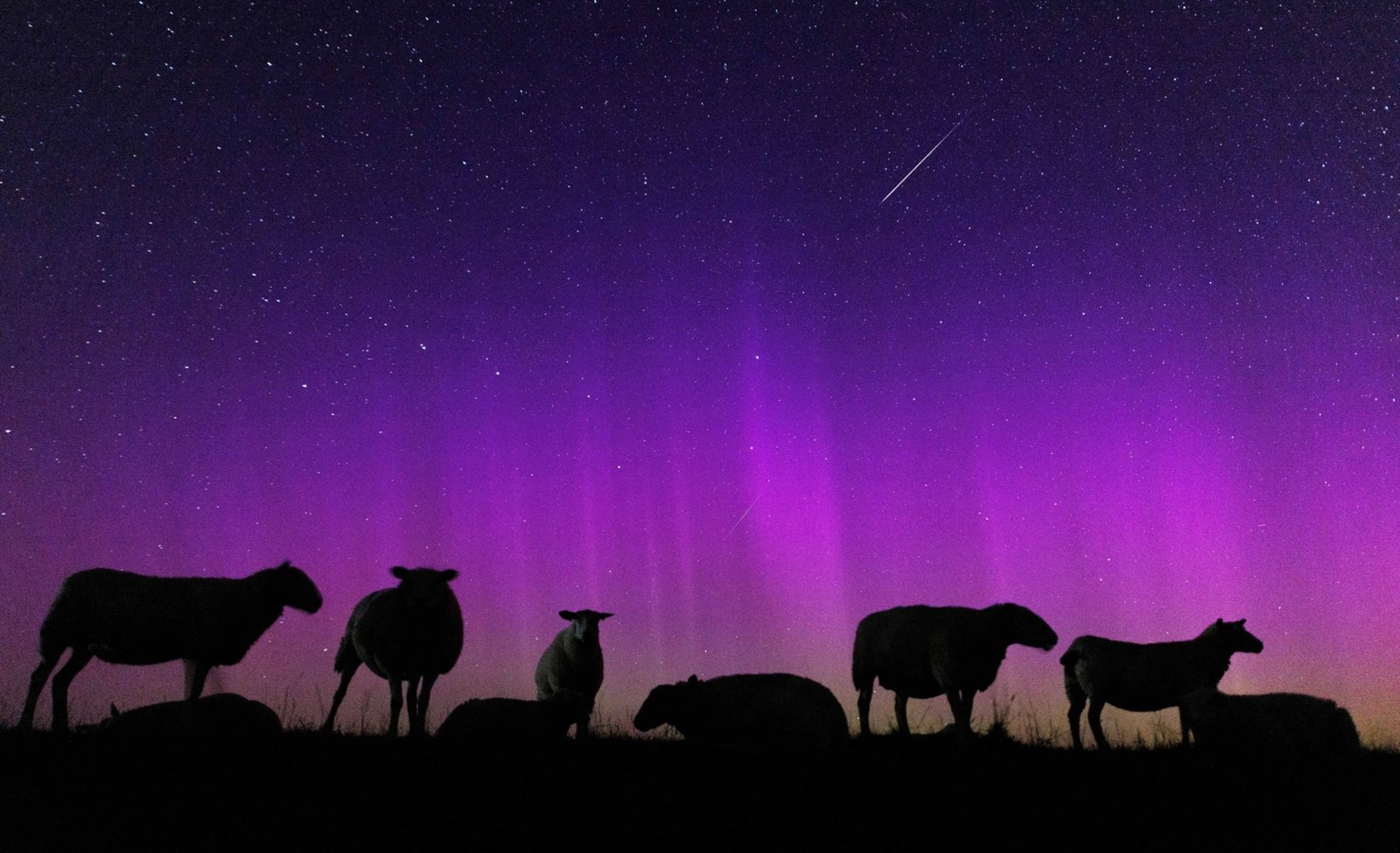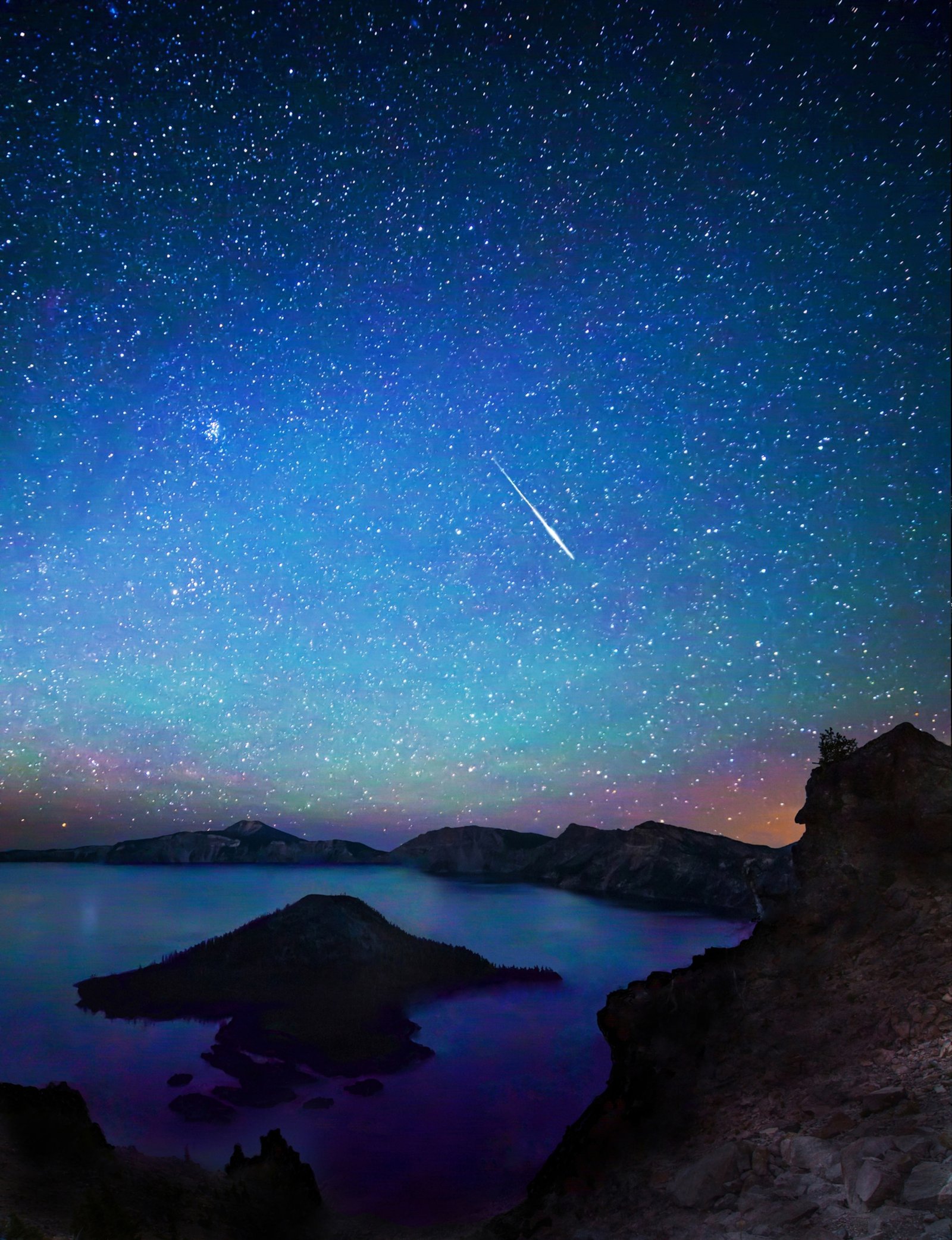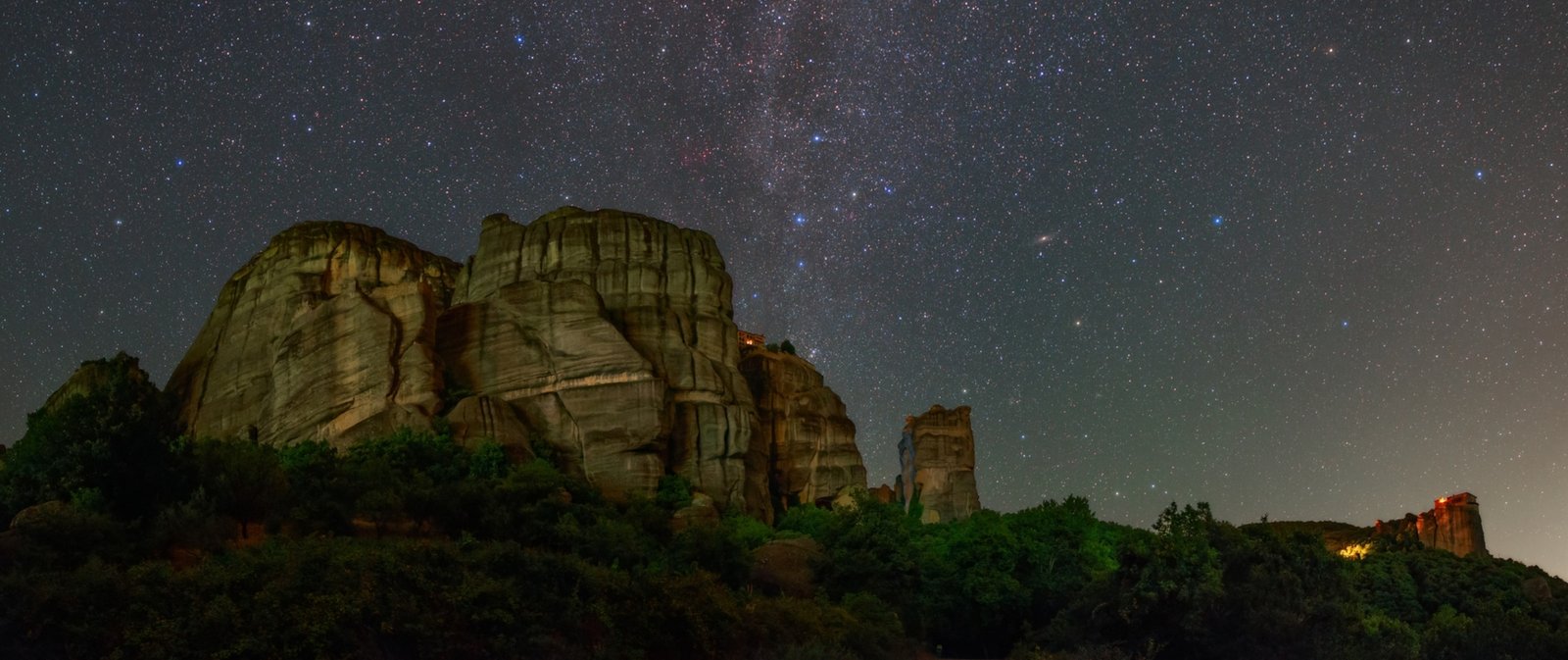August is one of the best months of the year for stargazing in the Northern Hemisphere, thanks to warm nights and the famous Perseid meteor shower. Though the Perseids will be dampened by bright moonlight this year, you should still be able to see meteors if the skies are clear.
But meteors aren’t the only thing lighting up the heavens. This August, you can catch a rare six-planet lineup, a brilliant full moon, and one of the largest asteroids in our solar system glowing at peak brightness. Here’s everything to look for in the skies above.
The “sturgeon moon”—August 9
The month’s full “sturgeon moon” occurs on the night of August 9. The nickname, popularized by the Farmer’s Almanac, comes from the giant fish traditionally caught in late summer by Indigenous peoples of the Great Lakes region.
Though the specific timing varies by location, the moon generally rises around sunset, glowing brightly throughout the night and setting after sunrise. That gives skywatchers plenty of time to observe the textured surface of the moon in detail through binoculars or telescopes.

The Sturgeon Moon rises over Madrid’s Cuatro Torres business district on August 1, 2023. The August full moon gets its name from Indigenous fishing traditions in the Great Lakes region of North America, when sturgeon were most abundant.
Photograph by Javier Soriano, AFP/Getty Images
A “big four” asteroid reaches peak brightness—August 10
One of the solar system’s biggest asteroids, 2 Pallas, reaches peak brightness on the night of August 10. That’s when the space rock reaches opposition—positioned directly opposite the sun in Earth’s sky—making it visible all night long as it rises at sunset and sets at sunrise.
Discovered in 1802, Pallas is our solar system’s third-largest known asteroid by mass, with an average diameter of about 318 miles. It belongs to a group known as the “big four,” which includes the dwarf planet Ceres. Although Pallas won’t be visible to the naked eye, experienced stargazers with a telescope or high-powered binoculars might be able to spot it in the constellation Delphinus.
Six planets march across the sky—around August 10
In the early morning hours around August 10, skywatchers can catch a stunning planetary parade: Mercury, Venus, Jupiter, Saturn, Uranus, and Neptune will all appear in the sky at once. Mars, the lone outlier, will only be visible earlier in the evening.
(Here’s the best way to see a planetary alignment.)
According to NASA, such “planetary parades” are not very rare. In fact, we had one earlier this year. But they’re commonly limited to four or five planets, making this six-planet show one to catch. Just note: Mercury may be hard to spot due to its proximity to the sun, and Uranus and Neptune will require a telescope.
Perseid meteor shower peak—August 12–13
The Perseid meteor shower—one of the most reliable and beloved annual displays of shooting stars—is expected to peak overnight on August 12 into the morning of August 13. Under ideal dark-sky conditions, the Perseids can produce up to 100 meteors per hour.
But this year, the waning gibbous moon will put a damper on the show. At 84 percent brightness, it could wash out more than three-quarters of the meteors, according to the American Meteor Society.

Sheep graze under the northern lights near Hagermarsch, Germany, on August 13, 2024, as a Perseid meteor streaks across the sky.
Photograph by Matthias Balk, picture alliance/Getty Images
Mercury at greatest western elongation—August 19
On the morning of August 19, Mercury reaches its greatest western elongation—its farthest apparent distance from the sun in the sky, making it one of the best times this year to spot the elusive planet.
Around the same time, Venus and Jupiter will also be visible, making it worth the effort to rise early this morning.
The Moon, Mercury, Venus, and Jupiter converge—August 21
In the early hours of August 21, a close approach of the crescent moon, Mercury, Venus, and Jupiter will create a beautiful tableau in the predawn sky. The bright stars Castor, Pollux, and Procyon will join the display.
This eye-catching grouping will be most visible during the hour before sunrise, low in the eastern sky.

The Milky Way stretches across the sky from Cassiopeia to Cygnus and the Andromeda Galaxy appears above a 3000-year old bristlecone pine, California, August 9, 2016.
Photograph by Babak Tafreshi, Nat Geo Image Collection

A bright Perseid meteor streaks through a star-filled sky above Wizard Island in Oregon’s famed Crater Lake.
Photograph by John R. Foster, Science Photo Library
Prime stargazing conditions—August 23
The new moon on August 23 brings prime stargazing conditions, as the absence of moonlight allows for optimal viewing of distant galaxies, wispy nebulae, and even the last meteors from the Perseids. It’s an excellent time to scan the Milky Way with binoculars or a telescope if you have dark enough skies.
(A practical guide to stargazing.)
Late August also marks the start of peak season for spotting the Andromeda galaxy, our closest neighbor, in the Northern Hemisphere. Without any light pollution from the moon, the galaxy can be seen with the naked eye.
The Moon and Mars meet—August 26
Just after sunset on August 26, look low in the western sky to spot the crescent moon cozying up to Mars, only about 2.5 degrees apart. Depending on your location, the pair may only be visible briefly around sunset, very low in the sky.
Though Mars is currently dimmer than usual due to its orbital location, its red hue is still clearly visible to the naked eye.

Stars shine over the sandstone cliffs of Meteora, Greece, on August 5, 2013.
Photograph by Babak Tafreshi, Nat Geo Image Collection

Countless Adventures for Curious Familes
Limited Time: Bonus Issue Offer
Subscribe now and gift up to 4 bonus issues—starting at $34/year.


